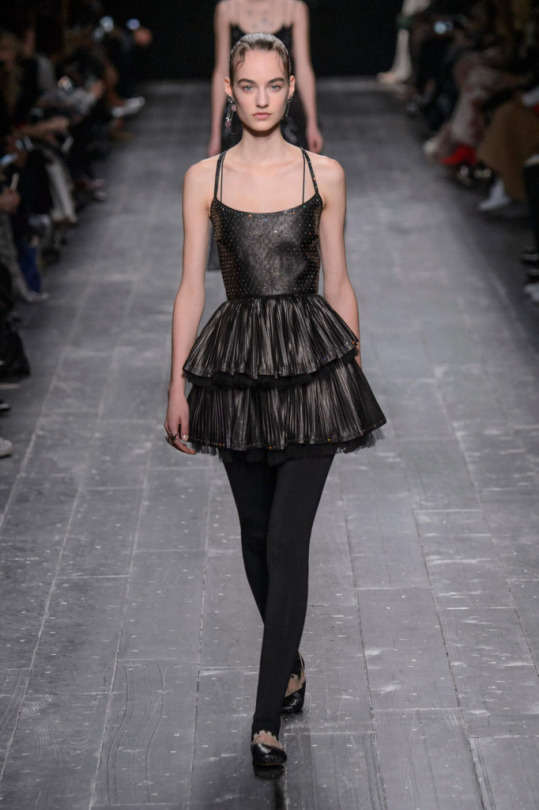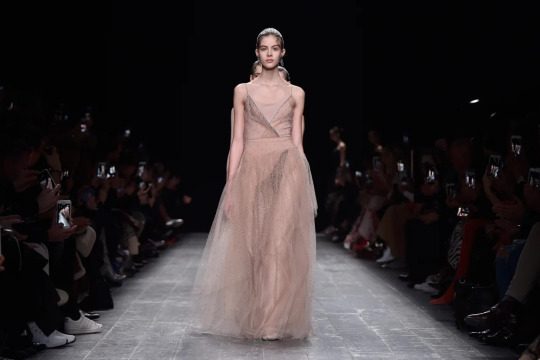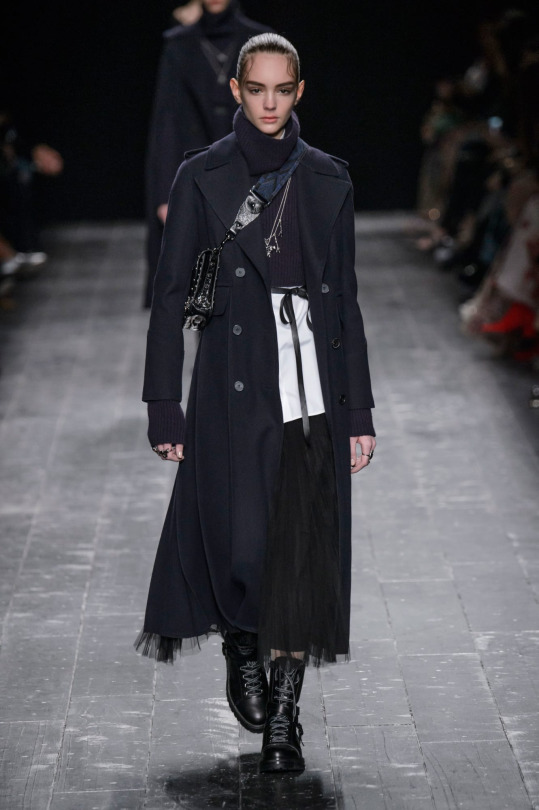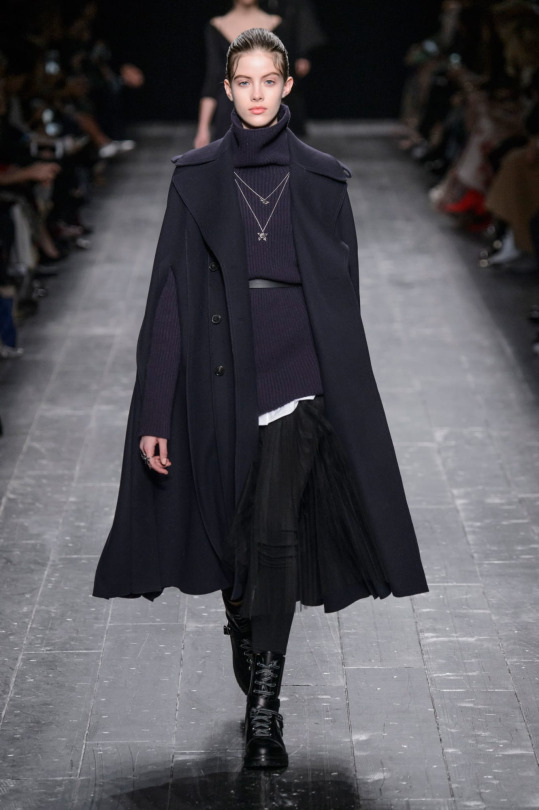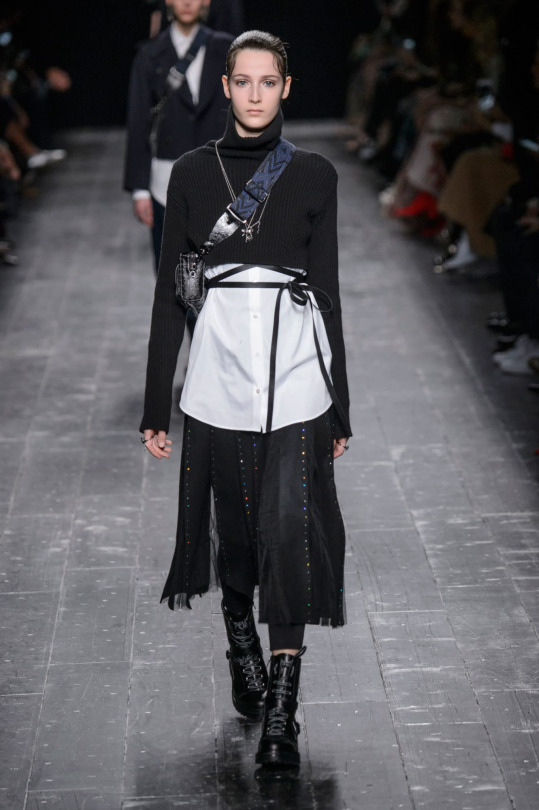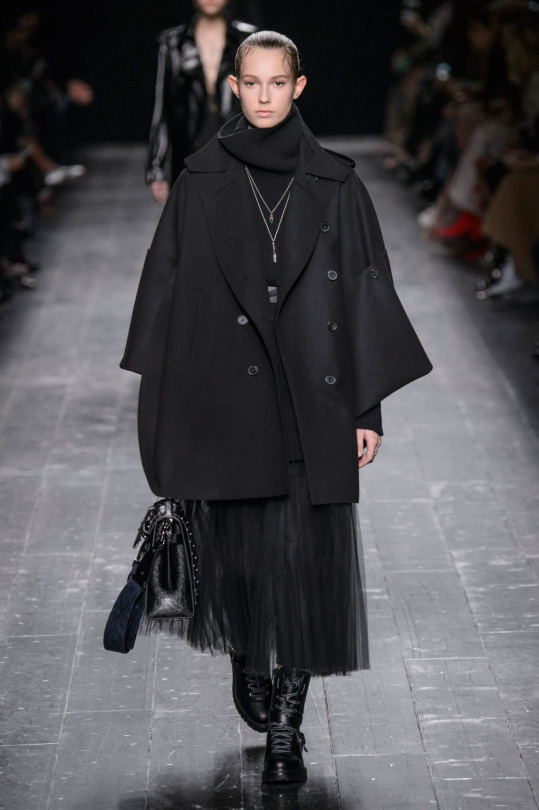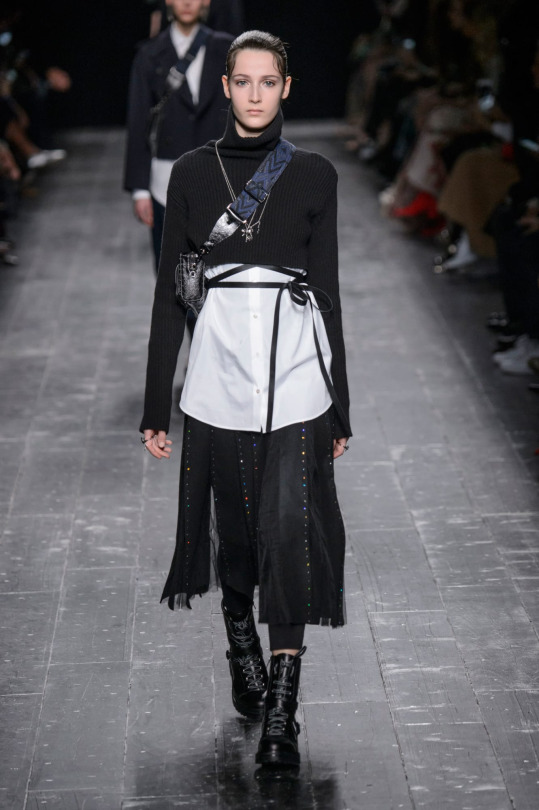To be generous to show your smile To be brave to be loved and love To learn and to practice
Don't wanna be here? Send us removal request.
Text
What is my definition of complaint?
I think everyone can hear some complaints every day, which can be rhetorical or cynical. It seems that it is normal and you can be potentially effected by that even sometimes you wonder what the feeling is. In doing so, I did an experiment yesterday, but I felt so dumb because I got a taste of complaining, which is awful. I think there is nothing more horrible than that. I was applying for the jobs in China but I was asked to provide height, weight, and a degree in case wasting the time. I slightly felt a bit offended because it is so-called discrimination in the UK but actually I did not as angry as I actually was because there was a saying came to my mind “convert their shit to your fuel” said by a Arab women. So, I am the kind of person as well. So, in my perception, I am blessed by the positive attitude, the luck from efforts.
However, I still tensionally tried to start this topic with a few of my friends. They literally could not accept this as well and then I met my tutor for the mock presentation I tried to tell her about this. She felt this is queer as well but her one attitude provoked my thinking because it was almost unprecedentedly hot yesterday everyone was complaining about it. As you know it is normal to start with a topic about the weather here but my tutor said it was hot but I like hot so, I would not have a complaint so have a good day. Then I replied the same and left. I suddenly realized that complaints are not a part of life and not mundane. Otherwise, it can make you unexpectedly miserable because I did derive joy or relief after it. As if it deprived my whole energy during the day. I felt not energetic and associated the following work vibe would be stressful so I did not feel happy when sitting in a shop because of that so I was reluctant to do anything yesterday. Therefore, I do not want to encounter such an experience anymore. It is an evil, which can eradicate your positive energy and turn you to an unbelievable and terrible condition. It should not exist in my life and I hope it should vanish in your life as well.
Candy
0 notes
Text
My Experience of Studying in the UK
1. Why do you choose to study in England?
Actually there are many factors because before coming here I was taking an internship in a company but I was so depressed and consumed which direction I want to go. And I also asked myself “what do you want and is this what you want” There was a sound reply no I want to have more choices and control m own life. So, I decided to study abroad to open my horizon and learn more about fashion and English to be better self because I also told myself ”as long as you think something is right and no harm you can try it” As there is a saying now or never. Therefore, I got student loan to study here although my parents and friends did support me at that time.
2. Did you meet some problems in your life or study?
Yes, I did. As you know it is a completely new country for me so, everything is new to me, so it is normal to confront some problems. particularly the food and culture.
As you know the food here is either expensive for me or so fatty, greasy and some snacks are too sweet. I think that is why a lot of Chinese students got fatter than two years ago. At the first few months it was okay for me, but I was so tired of them. The main problem is that I do not want to spend my time on cooking food because I want to do more meaningful things here, so my diet is quite unstable and healthy but now I started to cook because I realized how important it is because I got sick for few time. The worst thing is to be unwell here so, there is no one to take care of you so, it is crucial to be healthy and strong.
In terms of culture, I think everyone Asian students have to face it because it is completely different. For example, it is hard for you to make really close friend from other countries because you do not know their cultures and catch their points. In the same way, you cannot really understand them as well. In doing so, you have to learn how to both get along well with yourself and others because it is hard for others to understand your real feeling.
However, I have to say if you want you can make efforts to friendship because we are human. As long as you show your respect and love others can feel. For example, I have one of bros from Egypt. I would like to share some stories with him and sometimes I brought some small gift for him and then we gradually became really good friends.
Moreover, I have to say that it is important to be confident and positive here because people here admire positive and diligent people. As you know a lot of people in NTIC know that Candy is a positive girl and she always works so, when you make efforts and make progress others will be attracted by you. For example, one guy who is a clerk in college he asked me when I came back last time “do you still remember you cannot speak fluently but now you are different” so he would like to talk with me every time I go there.
3. Is there any difference studying in China after studying in Nottingham?
Yes, it is a completely different education system from China. For example, normally in China you can get a clear answer for what you should do but here no one can give your answer but yourself. You are the guide for every tutorial, but it is good. I like this method of teaching because it enables you to be able to figure out. For instance, If I ask my English tutor some questions my tutor will say “yes, it is interesting isn’t it? what do you think about?” and sometimes it inspires to ask questions by giving your points instead of everything for you to find more by yourself. So, what I mean is that you potentially learnt how to answer your own questions. so, at the beginning it can be frustrating, but you will be so good at handling the problems afterwards.
4. Do you think you are influenced by local habits?
For me not really because there is no big change in my daily routine. For example, I usually go to the gym, library and hang out with friends or go travelling. I live almost in the same way as when I was in China. As you mentioned drinking tea or something. It is fancy I like it but I do not drink often.
But one thing I changed is my expressing way. Give you an example, I greet to others by asking “how are you doing or something like that.” As you know we greet in different way in China and when I see something or someone beautiful, I will express that directly.
5. Study abroad is a worth experience for you. Why?
Yes, I think is really meaningful and this experience is so valuable for me because I learnt a lot both study and mental maturity. Factually, it is hard to express exactly by words, but I have to say everyone has different experience for themselves. It depends on how you create your own stories here.
6. Would you give me some suggestions to other students who will study there or want to study there?
First and foremost, you have to learn how to take care of yourself. You can make a friend who loves cooking or cook by yourself. Whatever it is a healthy body is the most important thing.
Secondly, to make most use of resources here to improve your English and understand multi-culture or have a romantic relationship. Whatever it is to make efforts to what you want to achieve and have a special experience here.
Last but not least, you should prepare to adapt a new system for studying because there is no one to give your answer and ask you to do this and that anymore. You should figure out what you need to do and how. As I heard from some students that they did learnt a lot here because there is few lectures or something but I have to say I learnt a lot. Therefore, how much you want to learn it depends on yourself.
0 notes
Text
Retailers face marketing decision?
Retailers are always searching for new marketing strategies, new products or better services to attract consumers, but these points have gradually become similar with each other. Here is the question how retailers react to stand out?
The first and foremost step is to have a crystal segmentation and position. Only do you segment clearly, you will be able to provide what customers exactly want to solve them problems. For example, retailers should decide whether they focus on upscale, mid-scale, or downscale shoppers (Kotler,2009)? and then it is essential to answer what target customers want “do they want variety, depth of assortment, convenience, or low price?”
Too many retailers fail to define and profile their targeting markets and succinctly position, whereas the successful corporations define their target markets well and position strongly. for example, Wal-mart positions itself strongly on low prices. 67 percent people can associate the slogan of American brand with Wal-mart. It is promise “Save money. Live better”.

In contrast, Whole Foods Market has only 216 stores and less than $6 billion in scale versus Wal-Mart’s more than 6,500 stores worldwide and sales of $35 billion. How does this small grocery chain compete with giant Wal-Mart? factually, it doesnt compete. It positions away from Wal-Mart because Whole Foods Market focus on upscale market. It offers them organica, natural, and gourmet foods, all swaddled in earth Day politics. In fact, a devoted Whole Food Market customers is more inclined to boycott the local Wal-Mart than shop at it.

To sum up, it is important to segment and position strongly. Different groups have different needs. Retailers needn’t compare with all the competitors if they know where want to go.
0 notes
Text
Teddy boy
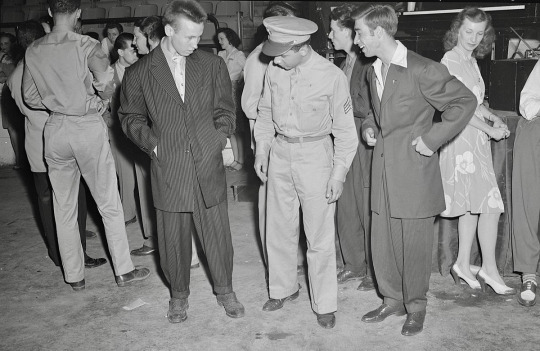
This article is about the subculture. For other uses, see Teddy Boy (disambiguation).1980s Teddy Boy outfit worn by Smutty Smiff, bassist of Levi and the RockatsThe Teddy Boys or Teds were a mainly British subculture of young men wearing clothes partly inspired by the styles worn by dandies in the Edwardian period, which Savile Row tailors had attempted to re-introduce in Britain after the Second World War.
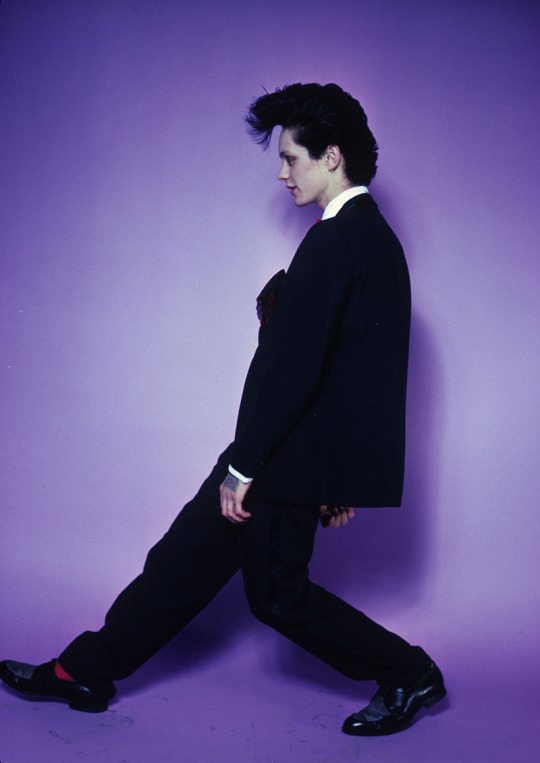
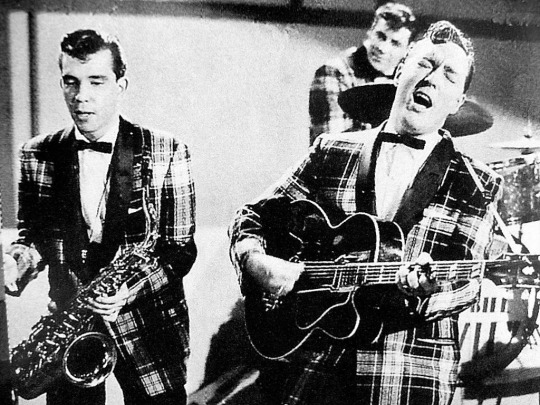
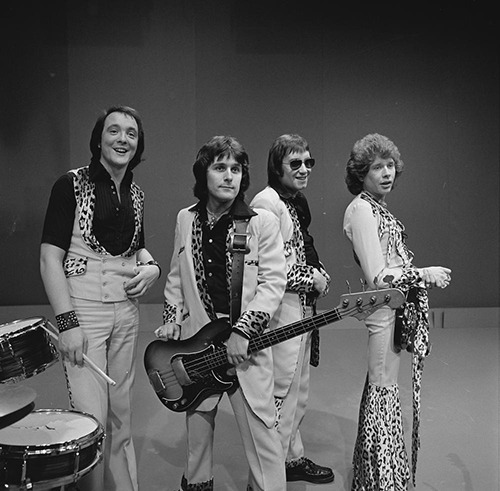
The fashion phenomenon often referred to as Teddy Boy style appeared in Britain during the mid 1950s as a rebellious side effect to the introduction of American Rock and Roll music. The Teddy Boy was a uniquely British phenomenon.[2]
The subculture started amongst teenagers in London in the early 1950s, and rapidly spread across the UK, then becoming strongly associated with rock and roll. Originally known as Cosh Boys, the name Teddy Boy was coined when a 1953 Daily Express newspaper headline shortened Edwardian to Teddy.
Wealthy young men, especially Guards officers, adopted the style of the Edwardian era.[citation needed] The Edwardian era had been just over 40 years earlier, and their grandparents, if not their parents, wore the style the first time around. The original Edwardian revival was far more historically accurate in terms of replicating the original Edwardian era style than the later Teddy Boy style. It featured tapered trousers, long jackets that bear a similarity to post-war American zoot suits and fancy waistcoats.
There are differing accounts of where the Teddy Boy style actually started and the ensuing pattern of geographical expansion. Some writers[who?] maintain that the first Teds emerged in the East End and in North London, around Tottenhamand Highbury, and from there they spread southwards, to Streatham, Battersea and Purley, and westwards, to Shepherd's Bush and Fulham, and then down to the seaside towns, and up into the Midlands until, by 1956, they had taken root all over Britain.[3] There is however now more evidence[citation needed] to support the view that the working class Edwardian style and fashion actually started around the country at about the same time. Part of the reason that South London is seen as the birthplace of the working class Edwardian style is because the popular press of the day reported the emergence of the style. However, there are many reports of the style being adopted in other parts of the country in the early 1950s with young men wearing tighter than normal trousers, long jackets, 'brothel creeper' shoes and sporting Tony Curtis hairstyles.
In 1953, the major newspapers reported on the sweeping trend in men's fashion across all the towns of Britain, towards what was termed the New Edwardian look. However, the working class Edwardian style had been on the street since at least 1951, because the style had been created by working class teenagers and not by Saville Row or fashion designers such as Hardy Amies.[citation needed]
Although there had been youth groups with their own dress codes called scuttlers in 19th century Manchester and Liverpool,[4] Teddy Boys were the first youth group in Britain to differentiate themselves as teenagers, helping create a youth market. The US film Blackboard Jungle marked a watershed in the United Kingdom. When shown in Elephant and Castle, south London in 1956, the teenage Teddy boy audience began to riot, tearing up seats and dancing in the cinema's aisles.[5] After that, riots took place around the country wherever the film was shown.[6]
Some Teds formed gangs and gained notoriety following violent clashes with rival youth gangs as well as unprovoked attacks on immigrants. The most notable clashes were the 1958 Notting Hill race riots, in which Teddy Boys were present in large numbers and were implicated in attacks on the West Indian community. According to reports released decades after the riots, "Teddy boys armed with iron bars, butcher's knives and weighted leather belts" participated in mobs "300- to 400-strong" that targeted Black residents, in one night alone leaving "five black men lying unconscious on the pavements of Notting Hill." [7]
The violent lifestyle was sensationalised in the pulp novel Teddy Boy by Ernest Ryman, first published in the UK in 1958.
Style[edit]
Examples of Teddy Boy clothing worn by Ray Stiles and
Les Gray
of '70s
glam rock
band
Mud
: drape jackets, brothel creepers and
drainpipe trousers
Teddy Boy clothing included drape jackets reminiscent of 1940s American zoot suits worn by Italian-American, Chicano and African-American communities (such as Cab Calloway or Louis Jordan), usually in dark shades, sometimes with a velvet trim collar and pocket flaps, and high-waist "drainpipe" trousers, often exposing the socks. The outfit also included a high-necked loose-collared white shirt (known as a Mr. B. collar, because it was often worn by jazz musician Billy Eckstine); a narrow "Slim Jim" tie or western bolo tie, and a brocade waistcoat.[9] The clothes were mostly tailor-made at great expense, and paid through weekly installments.[10]
Favoured footwear included highly polished Oxfords, chunky brogues, and crepe-soled shoes, often suede (known as brothel creepers or beetle crushers). Preferred hairstyles included long, strongly-moulded greased-up hair with a quiff at the front and the side combed back to form a duck's arse at the rear. Another style was the "Boston", in which the hair was greased straight back and cut square across at the nape.
Teddy Girls[
edit
]
Teddy Girls[11] wore drape jackets, pencil skirts, hobble skirts, long plaits, rolled-up jeans, flat shoes, tailored jackets with velvet collars, straw boater hats, cameo brooches, espadrilles, coolie hats and long, elegant clutch bags. Later, they adopted the American fashions of toreador pants, voluminous circle skirts, and hair in ponytails.[12]
The Teddy Girls' choices of clothes were not intended strictly for aesthetic effect; these girls were collectively rejecting post-war austerity. They were young working-class women from the poorer districts of London. They would typically leave school at the age of 14 or 15 and work in factories or offices.[13]Teddy Girls spent much of their free time buying or making their trademark clothes. It was a head-turning, fastidious style from the fashion houses, which had launched haute-couture clothing lines recalling the Edwardian era.[14]
1 note
·
View note
Text
Cool personality
Cool is an attitude or personality type that has emerged in many different societies, during different historical epochs, and which has served different social functions, but is nevertheless recognizable in all its manifestations as a particular combination of three core personality traits, namely narcissism, ironic detachment and hedonism.
Hence, Cool is not an image, a way of looking, talking or doing.
0 notes
Text
Chloe
蔻依 (Chloe) 品牌创始人加比·阿格依奥 (Gaby Aghion) 女士于巴黎当地时间9月27日去世,享年93岁。
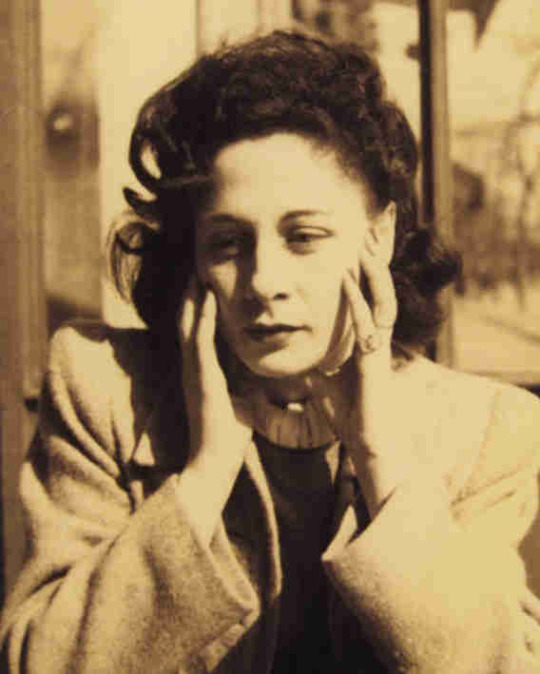
“There’s always something a little boyish with Natacha. A little eccentric, tough but not butch, a slightly hippie-roots thing, but refined.”
0 notes
Text
The Antwerp Six
Ann Demeulemeester
Walter Van Beirendonck
Dirk van saene
dries van noten
dirk bikkembergs
Marina Yee
0 notes
Text
Vincent Van Gogh

1865 Autumn
1882 watercolor

1887

1889
For Van Gogh, wheat was a symbol of the eternal cycle of nature and the transience of life. He saw the reaper as 'the image of death . . . in this sense that humanity would be the wheat being reaped.' He added, however, that this death was 'almost smiling. It's all yellow except for a line of violet hills – a pale, blond yellow. I myself find that funny, that I saw it like that through the iron bars of a cell.'
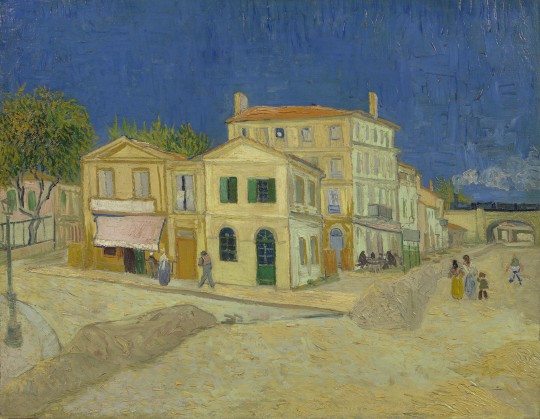
1888

1888 with Paul Gauguin (1848-1903)

1889
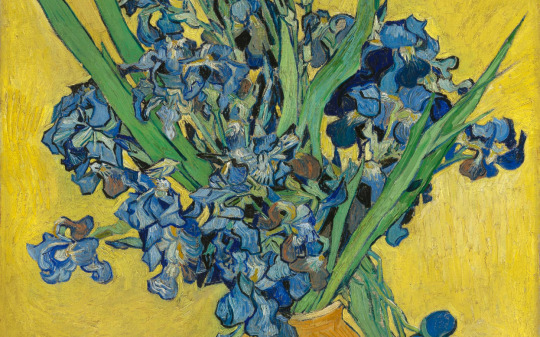


1890
In general, he was productive during 1870 until he died in 1890. It seems that people more appreciate his works after 1870s because his works provoke people to associate the life with brightness. In this essence, his paintings and colors reflect how himself yearn for brightness and passion, as well as this is present human-being nature. No one want associate life with roughness and pessimistic.
He uses the color to express his confusion, loneliness, passion and fear. This really polite and fierce way to express himself but the sadness is that he indeed seems too emotional and ideal. From the perspective of artists, this is good thing they should be fun, naive and passionate, but if they can combine real reality and scientific thinking I think these phenomenal artists can be more successful and have a good end.
What I learned from Vincent’s story is avoiding too immense in emotion but integrate scientific or systematic element and art because I know I am a creative person and sometimes a bit optimal. To some extent, it is good thing but we always should learn how to analysize what is effective and what is not working and then to avoid, Charlie said. If Vincent could have thought his life logically for few moment I can say he could change his life if he wants.
Nonetheless, there may be some barriers for him because he did not finish school and university and that period may be hard for him to rebel. Therefore, how lucky we are because we live in this period and we have more choices and have the rights to learn what we need and want.
https://www.vangoghmuseum.com/en/search/collection?q=&pagesize=294#hwm0122
0 notes
Text
Cool rules
Cool is not inherent in objects but in people so what is seen as Cool will change from place to place, from time to time and from generation to generation.
At least four generations alive who have their own Cool since 50s. In their time, in the jazz clubs of the 50s, or the hippy festival of the 60s, or the punk explosion of the 70s. One component of Cool is certainlly a retarded adlescence, inspired in part by a morbid fear of aging:
50s: Get Off of My Cloud have had a glimpse of danse macabre.
60s:everyday routine: city streets, cafe, movie theatres and clubs thronged with exuberant youth for whom wearing heir long or sporting a nose ring is considered quite a mild social statement (it is easy to forget that in ‘swinging london’). in the 60s the burger joint was the only place open after 10.30pm
Until now, Cool is not that Cool anymore, it is new secular virtue, for example Cool now inspires women as much as it does men, from smart television executive to single parents living in housing developments.
Distinctive clothes and haircuts have always been key signifiers of Cool, but that doesnt make it purely a matter of fashion.
It is an oppositional attitude adopted by individuals or small groups to express defiance to authority - whether that of the parent, the teacher,the police, the boss or prison warden.
Cool is permanent state of private rebellion because it is not collective political response but a stance of individual defiance, which doesnt announce itself in strident slogans but conceals its rebellion behind a mask of ironic impassivity.
No-one wants to be good anymore, they want to be Cool, and this desire is no longer confined to teenagers but is to be found in a sizable minority even of the over-50s who permanently affected by the 60s counter-culture.
0 notes
Text
What is cool?one
In the 50s and 60s Abstract Expressionists and artists in New York City colonized as grimy lofts in old commercial premises as a form of resistance against Modernist urban redevelopment plan. Nonetheless, shift occurred as imaginative property developers moved in on the loft market; from being zones of feisty individualism, lofts becomes about being rich, marketed as the places in winch “movers and shakers” planned their next career spectacular.....Suddenly inner-city living was cool.
(It appears that different generation can interpret the style differently, so why should we stick with the same style and definition all the time? Style and meaning are interpreted by people and history are the evidence of the past, which marks the natural selection) - Thus, cool can be shown through rock and roll, punk or hipster element but it is not the original meaning anymore.
The dark side of coolness, cool can be confounded or misinterpreted as well.
The US hip-hop culture seethes with violence, from the gunning down of artists Tupac Shakur and Biggie Smalls to the indictment of Puff Daddy for GBH and assault against his video producer. In Columbine High school in Denver, in April 1999 two ‘goths’ massacred 25 of their fellow students- was described in the media as divided into four or five sub-cultures, each believing themselves cooler than the rest, while the killers themselves allegedly consumed industrial quantities of drugs.
Even the 1999 Kosovo crisis yielded Coll connections: press photograph showed Serbian paramilitaries, sporting tattoos, bandannas and T-shirts bearing Hell’s Angels insignia, plus the ultimate style accessory, a Kalashnikov assault rifle.
So what is cool? We intend to take an unfashionably naive approach by simply accepting cool as a human behavior and cultural artifacts - in speech and dance, films and television shows, books and magazines, music, clothes, paintings, cars, computers or motorcycles. It doesn't take too long much investigation to understand that Cool is not something that inheres in these artifacts themselves, but rather in people’s attitude to them.
(Levi Strauss found out the hard way that Cool is not an intrinsic property woven into the blue denim of its jeans: it was the way that their wearers perceived Levi’s that made them Cool, and within a few years that perception would be imperceptibly seduced away by Calvin Klein and Tommy Hilfiger)
In light of this, it indicates that the reason why people advocate a brand is mostly about psychological needs rather than merely the products. Hence, for a brand, both designers and marketers should enable every piece of apparel to have soul and meaning. People need something to encourage them and inspire them. So, they sometimes are contented whereby brands created in current well developed era.
0 notes
Text
Rei Kawakubo
Rei Kawakubo (川久保 玲 Kawakubo Rei) (b. 1942) is a Japanese fashion designer based in Tokyo and Paris. She is the founder of Comme des Garçons and Dover Street Market. In recognition of the notable design contributions of Kawakubo, an exhibition of her designs entitled Rei Kawakubo/Commes des Garçons, Art of the In-Between opened on 5 May 2017 at the Metropolitan Museum of Art in New York City.
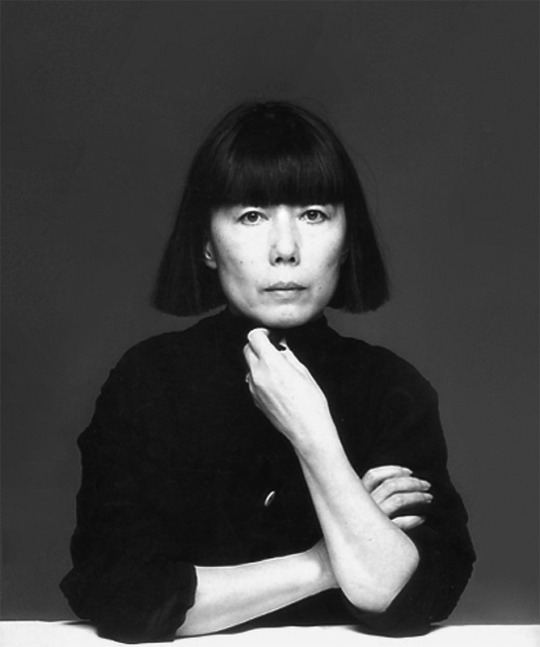
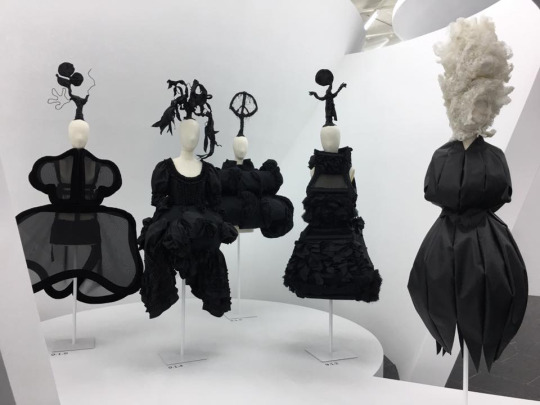
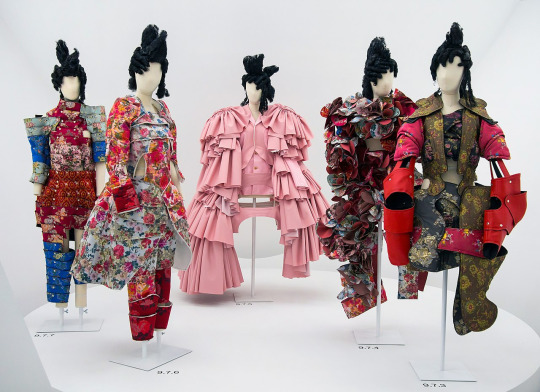
0 notes
Text
Yohji Yamamoto
Yohji Yamamoto is a Japanese fashion designer based in Tokyo and Paris. Considered a master tailor alongside those such as Madeleine Vionnet, he is known for his avant-garde tailoring featuring Japanese design aesthetics.

0 notes
Text
Giorgio Armani
Giorgio Armani is an Italian fashion designer. He is known today for his clean, tailored lines. He formed his company, Armani, in 1975, and by 2001 was acclaimed as the most successful designer of Italian origin, with an annual turnover of $1.6 billion and a personal fortune of $8.1 billion as of 2017
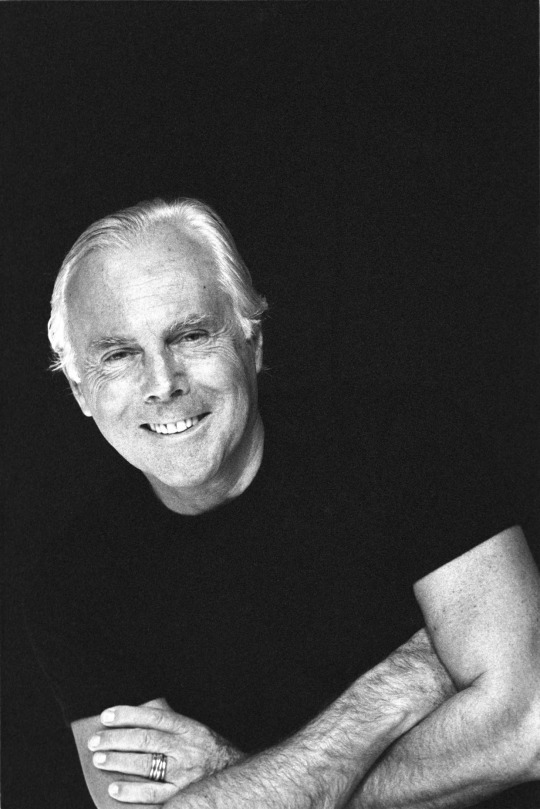
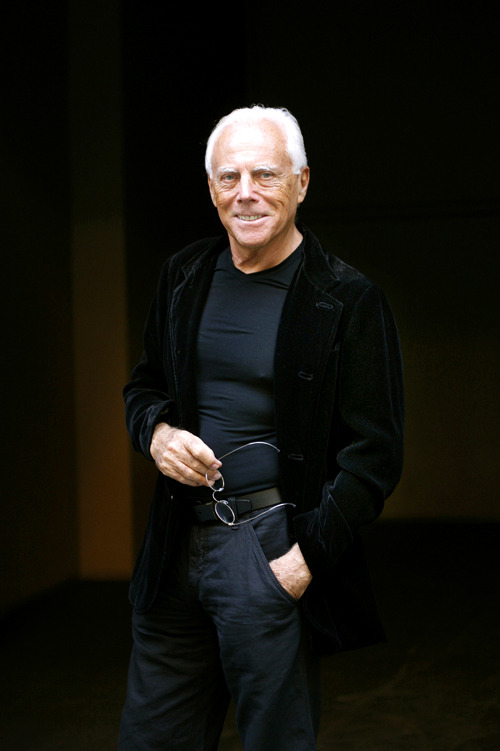
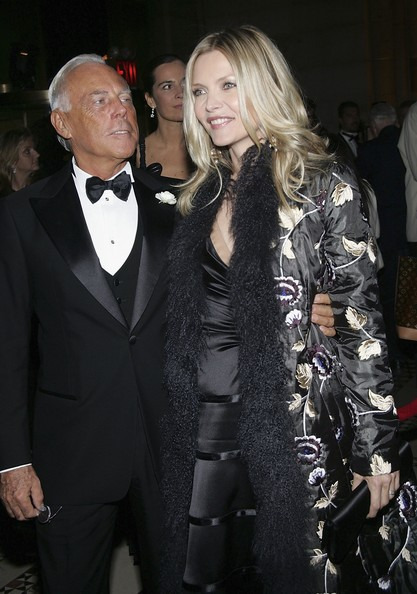
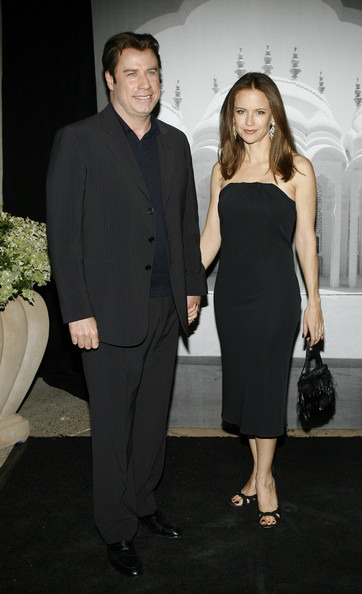
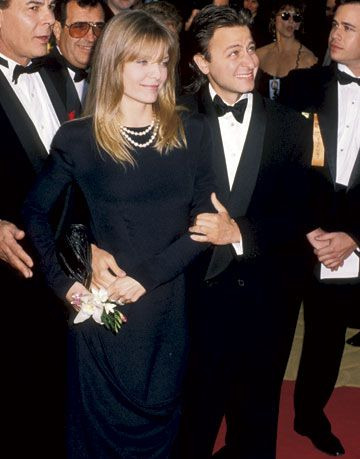
“After all the extravagant, people want Something clean and simple”
“I love...to take existing forms and then take them out of their context. I think that is probably the Direction of modern fashion”
The Italian adore pants, perhaps none more so than Giorgio Armani who cuts them feminine “for a women, not a superwomen”
0 notes
Text
Nicole

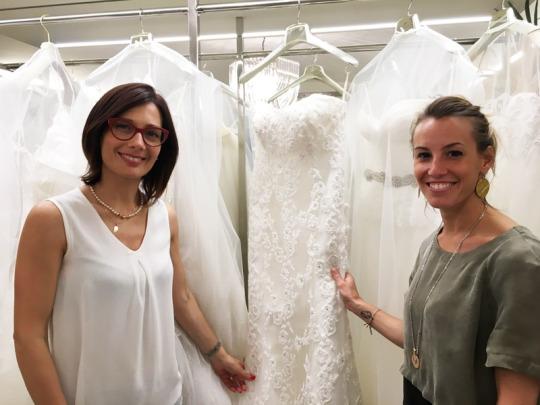
Alessandra Rinaudo“It's with a lot of emotions in my heart that I open the doors of my magic world.”Passion and commitment: this is the magic of our work.Alessandra Rinaudo, innovative designer of the bridal world, after winning the leadership of the market with the Nicole group collections, wants to interpret herself in her personal collection: Alessandra RThe feltneed to reveal herself inspired the stylist in the realization of aunique collection only available in the most important boutique inthe world. Soft,sliding lines, glamorous naked backs become elegant with luxuriousem broideries. Contemporary details and bright jewelry on precioussilk name her the icon of style.“A warmthank you to all the couples that chose Nicole; their affection andjoy are the life blood of our future.” Alessandra Rinaudo – DesignerThe collections will speak to you of elegance, taste, quality, the same prospects that will charm youreyes - and heart – in Nicole showrooms. It will be here among themirrors of the elegant one brand stores that you will find thegreatest choice of dresses and the courtesy and expertise of herstaff: attentive professionals, ready to walk you by the handtowards the most emotional step of this engaging journey called life.
Italian Renaissance
Well-balanced dimensions, transient colors, floating fabrics that caress the bodies in a gentle dance. Alessandra Rinaudo Bridal Couture is a tribute to the elegance and Italian Style.
Each element expresses a desire to discover and represent the beauty in all its forms and aspects. The lightness of volumes and cuts, the magical texture of the most exclusive Italian silks, the romantic design and the floral pattern of French laces printed and flocked fabrics exclusively created for the designer.
Unstructured feminine bodices “tattoo effect” to enhance backs and caress low-cut necklines, sensual and unexpected splits, dynamics and rich skirts. From absolutely innovative soft dresses, sensual and refined mermaids, to princess ballgowns, nothing is obvious. Each design reflects the mood of the collection and art of Italian craftsmanship.
Alessandra Rinaudo’s Bride is richly adorned, the protagonist in her sensual and sophisticated elegance. It is a painting, an expression of Italian Art and design. This unique collection is completed with the sumptuous Italian elegance of the designer, according to an exquisite and timeless elegance.
Made to Measure
Tailoring means customization. An Alessandra Rinaudo’s creation isn’t simply a dress but also an exclusive service to your bride and Atelier. Made to measure designs following a woman’s silhouette, drawn on the body as a second skin.
The style department can support all boutiques in creating customized sketches for your bride. Enriching the total look with exclusive accessories such as, romantic veils, unusual shawls, gloves and precious jewels for a glamorous bride while also offering a corresponding trendy bridal shoes for a woman who never gives up her femininity.
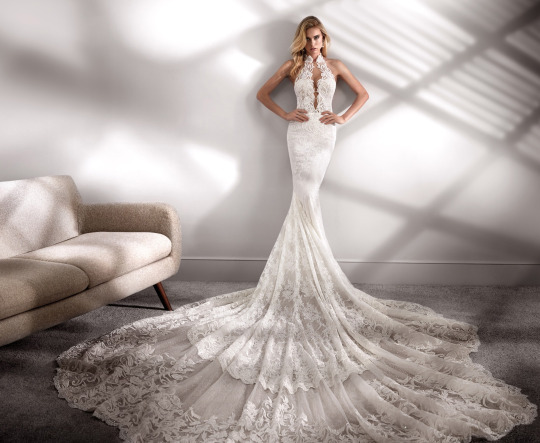
0 notes
Text
Lucille ball
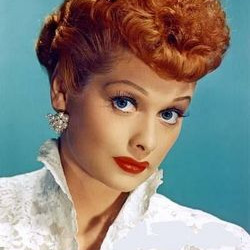
Lucille Désirée Ball was an American actress, comedian, model, entertainment studio executive and producer. She was the star of the self-produced sitcoms I Love Lucy, The Lucy Show, Here's Lucy, and Life with Lucy, as well as comedy television specials aired under the title The Lucy-Desi Comedy Hour.
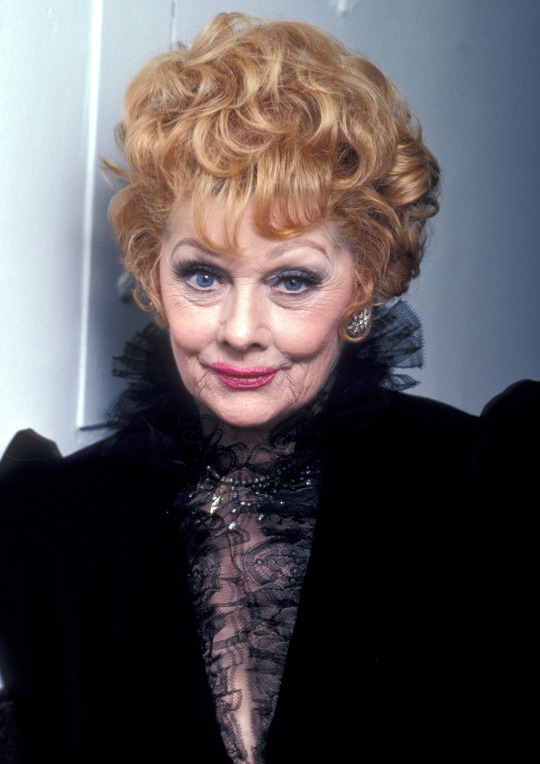
0 notes
